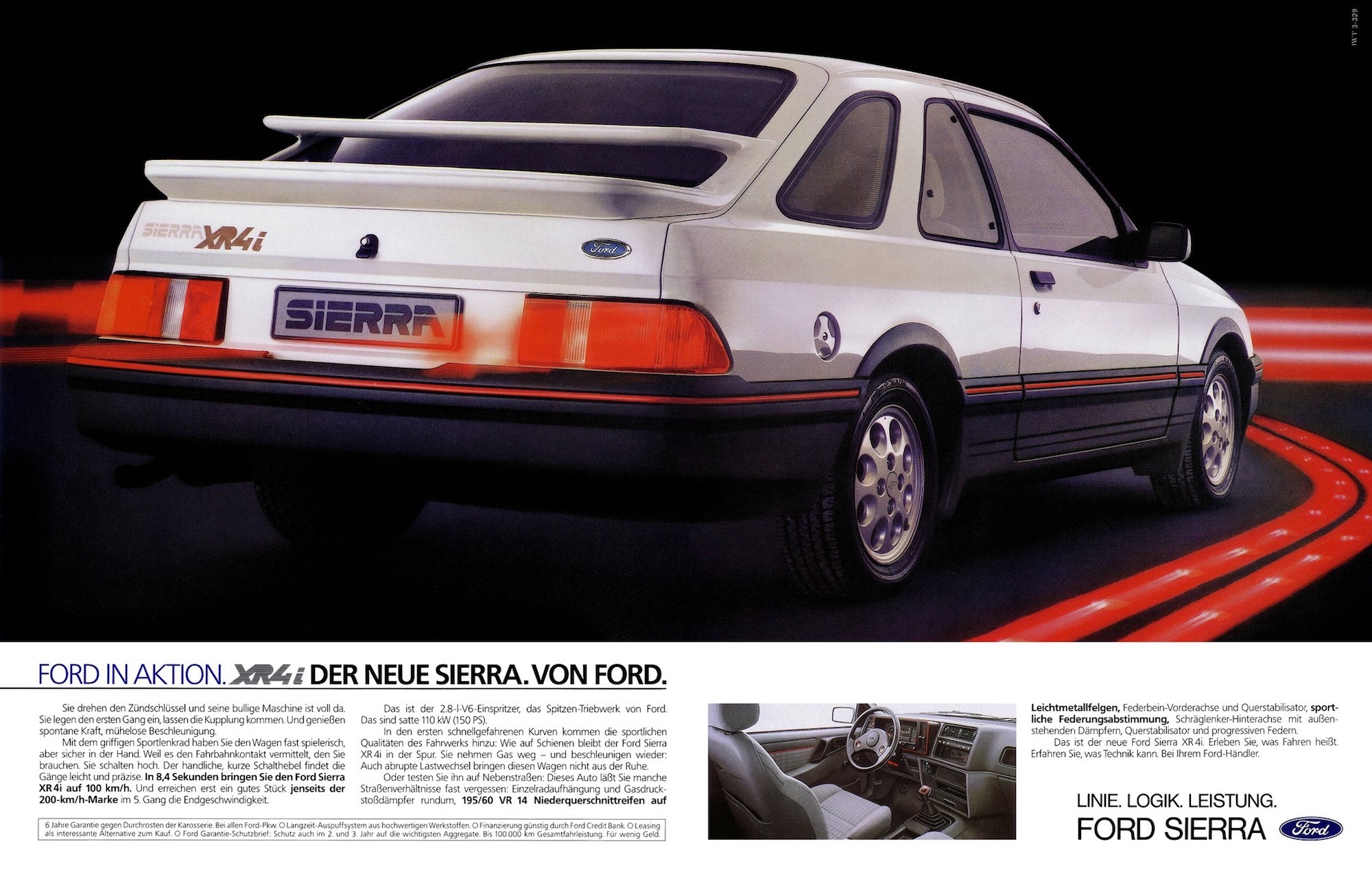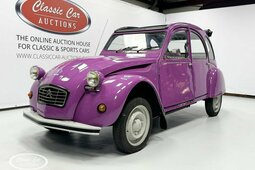It's probably hard to imagine a Ford model that reflects the '80s more than the Sierra. In a decade where personal computers and video game consoles had become a reality, and flying cars were supposed to be the latest novelty, Ford could no longer make do in Europe with vintage cars like the Cortina and the Taunus. The '80s demanded something completely new, and Ford managed to surprise even the greatest futurists.
The sleek design of the Sierra that was released in 1982 seemed to embody the word "aerodynamic". In its communications, Ford emphasized the sleekness of the body, stating that the Sierra had 20% less aerodynamic resistance compared to the average of its competitors. Given that, in the same year Audi launched the even more aerodynamic Audi 100, with a drag coefficient of 0.30 (compared to the Sierra's 0.32), visually, the Sierra seemed more futuristic than the Audi 100. However, the futuristic design was initially a disadvantage. More conservative buyers, who were content with the Cortina and Taunus models, looked at the new Ford with suspicion.
Ford had to use all its marketing skill to demonstrate that this particular design was beneficial to the user, as at high speeds the reduced aerodynamic drag resulted in direct benefits in the form of reduced fuel consumption and noise. To further increase public interest in the new Sierra, Ford introduced the sporty XR4i model in 1983. The XR4i was a logical extension of Ford's hotter model range, consisting of the Fiesta XR2 and the Escort XR3. The XR4i was only available as a three-door, but it differed from the standard three-door versions because the XR4i's body had an additional window pillar. It also had a huge biplane rear spoiler that clearly testified to the fact that this sporty Sierra was a child of the eighties.
The Sierra XR4i not only looked good, but it also drove well. The 2.8-liter Cologne V6 engine with Bosch K-Jetronic mechanical injection could produce 150 horsepower. Nothing extraordinary, but let's not forget that those were different times and the Sierra weighed more or less like a new Fiesta today (1,200 kg), so those 150 horses allowed it to go from 0 to 100 km/h in 8 seconds and reach a top speed of over 200 km/h.
The XR4i was produced only for a few years, until 1985. During that time, Ford sold 25,662 units of these sports cars. And the most interesting thing is that from 1985 to 1989, it continued in the United States as the Merkur XR4Ti. European brands like Audi, BMW, and Mercedes were becoming increasingly popular in the United States at that time, so Ford decided to experiment and try selling European models in America as if they were higher-quality, German-made Fords. The idea was not successful: the European Fords were expensive, and the Merkur brand ("Merkur" means "Mercury" in German) ended that same year, 1989. The Merkur was different from the European XR4i: it had a smaller engine, 2.3 liters, 4 cylinders, but it was turbocharged, so it had a higher output of 170 horsepower. In five years, 42,464 Merkur XR4Tis were sold in the United States, a number much lower than Ford had anticipated.
In the meantime, sales of the Sierra in Europe had already taken off by 1985, so Ford decided to replace the XR4i with the newer XR4x4. As the name suggests, this car was equipped with all-wheel drive and, unlike the XR4i, it came standard with a five-door hatchback (a station wagon version was introduced later). This move proved to be astute, as the five-door body style broadened the range of potential customers. There was also a three-door version of the XR4x4, but very few were produced. Incidentally, the additional pillar was abandoned in the three-door version in 1985, and from then on, all three-door models had the same design, with "normal" side windows. The biplane spoiler was sacrificed after it was decided that buyers of the five-door hatchback wouldn't appreciate it.
And it wasn't the end for sporty Sierras. The Ford Sierra RS Cosworth went into production in 1986: with rear-wheel drive and a 2-liter turbo engine producing over 200 horsepower, it was the most powerful version ever. Cosworth also produced the most expensive Sierra version of all time: the RS500. This model was sold only in the UK and only 500 units were produced. In 1988, the Cosworth sedan came out (later available as a 4x4 too). For fans of sporty Sierras, there is therefore something to choose from at any price range: the XR4i, the XR4x4, the Cosworth versions, or the Merkur XR4Ti, which in Europe is pure exoticism. And in South Africa, there was even the Sierra XR8, with a 5-liter V8 under the hood!
Overall, in the period from 1982 to 1992, more than 2.7 million Sierras and various versions were built around the world. Most of the cars were built in England, Germany, and Belgium, although they were also produced in Argentina, Venezuela, South Africa, and New Zealand. In 1993, Ford launched the Mondeo, which became the successor to the Sierra and the Ford Scorpio.
---
Embark on a journey to find your ideal vehicle by browsing through our Car Categories. Or, delve into our Classic Passion Shop for an exciting array of products from our partners, perfect for enthusiasts looking to enhance their collection!


















